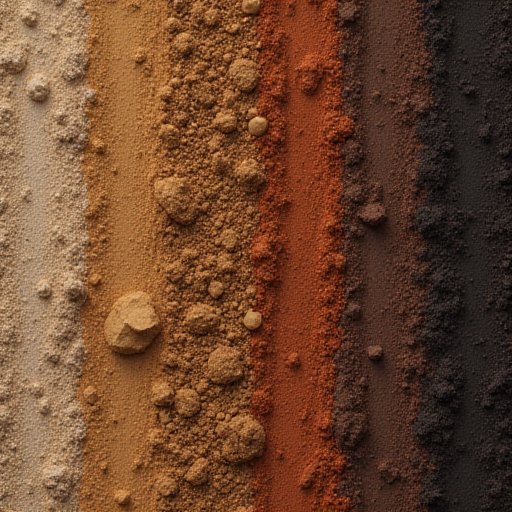
Why is Dirt Brown?
Dirt, often colloquially referred to as soil, is an essential component of the Earth's ecosystem. Its characteristic brown color is something most of us take for granted, but have you ever stopped to wonder why dirt is brown? This article delves into the fascinating reasons behind this ubiquitous hue, exploring the scientific, environmental, and biological factors that contribute to the color of soil.
The Composition of Soil
At its most basic, soil is composed of minerals, organic matter, water, and air. The mineral component is derived from the breakdown of rocks and consists of particles of varying sizes, primarily classified as sand, silt, and clay. Organic matter, on the other hand, originates from decomposed plant and animal material, which is crucial for soil fertility.
Mineral Content
The mineral makeup of soil is one of the primary factors that influence its color. Different minerals impart different colors to the soil. For instance:
- Iron Oxides: Iron is a common element in many soils, and its oxides are responsible for a range of colors, from reds and yellows to browns. The presence of iron oxides, especially in their hydrated forms like goethite (yellow-brown) and hematite (red), often gives soil its brownish tint.
- Manganese Oxides: These can impart darker hues, such as black or dark brown, especially in soils rich in manganese.
- Aluminum Oxides: While less chromatic than iron oxides, they can contribute to lighter color tones in soil.
Organic Matter
Organic matter, or humus, is another significant contributor to the brown color of soil. As plant and animal matter decompose, they form humus, which is typically brown or black. The dark color of humus is due to the presence of complex organic compounds such as lignin and tannins, which absorb a broad spectrum of light wavelengths, giving soil its darker appearance. The higher the organic content, the darker the soil will typically appear.
Soil Formation and Climate
The processes of soil formation and the specific climate of a region also play vital roles in determining soil color. Factors such as temperature, rainfall, and vegetation type influence the rate of organic matter decomposition and mineral weathering:
- Climate: In regions with high rainfall and warm temperatures, organic matter decomposes rapidly, often leading to darker soils due to increased humus content. Conversely, in arid regions, soils may appear lighter due to less organic matter and a higher concentration of mineral content.
- Leaching: In wetter climates, nutrients and minerals can be leached away from the surface, sometimes leading to lighter-colored, leached soils in the upper layers.
- Soil Horizon Development: Over time, soils develop distinct layers or horizons. The topsoil, which is often richer in organic matter, tends to be darker, while subsoil layers, which might have less organic matter and more minerals, can vary in color.
Biological Factors
Soil is teeming with life, from microorganisms like bacteria and fungi to earthworms and insects. These organisms contribute to soil color by breaking down organic material and altering the chemical composition of the soil:
- Microbial Activity: Microorganisms play a crucial role in the decomposition process, transforming organic residues into humus. Their metabolic byproducts can also influence soil color.
- Plant Roots: Certain plant roots can excrete acids that help in the breakdown of minerals, affecting the soil's color.
Human Influence
Human activities, such as agriculture, deforestation, and urbanization, can also influence the color of soil:
- Agricultural Practices: The addition of organic or inorganic materials, such as fertilizers and compost, can change soil color over time.
- Pollution: Contaminants can alter soil chemistry and color, sometimes leading to unnatural hues.
Conclusion
The brown color of dirt is the result of a complex interplay between its mineral content, organic matter, biological activity, climate, and human influence. While iron oxides and humus are primary contributors to the brown coloration, numerous other factors can subtly alter the shade and tone of soil in different environments. Understanding these factors not only satisfies curiosity but also aids in appreciating the diverse and dynamic nature of the earth beneath our feet. Soil, in its humble brownness, tells a story of geological history, biological processes, and human impact, making it a subject worthy of study and respect.
